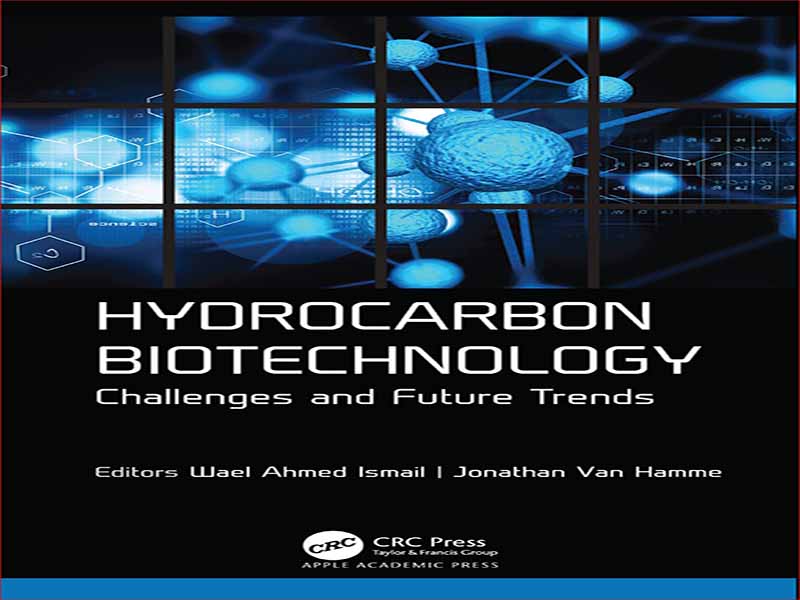- عنوان کتاب: HYDROCARBON BIOTECHNOLOGY / Challenges and Future Trends
- نویسنده: Wael-Ahmed-Ismail
- حوزه: بیوشیمی
- سال انتشار: 2023
- تعداد صفحه: 414
- زبان اصلی: انگلیسی
- نوع فایل: pdf
- حجم فایل: 23.6 مگابایت
در مقدمه شماره افتتاحیه مجله باکتریولوژی، منتشر شده در فوریه 1916، دکتر دبلیو تی سجویک، اولین رئیس انجمن باکتری شناسان آمریکایی، خاطرنشان کرد که از این پس باکتری شناسی باید به عنوان شاخه ای گسترده و اساسی از علم از اهمیت نظری و عملی بسیار بالایی برخوردار است و منصفانه می خواهد فردا بسیار بزرگتر و مهمتر شود» (سدویک، 1916). در آن زمان، تئوریهای مربوط به نقش میکروارگانیسمها در تشکیل نفت به ادبیات نفوذ کرده بود (Dake، 1913)، و در سال 1946، Claude E. ZoBell یک بررسی 49 صفحهای به نام Action of Microorganisms on Hydrocarbons (Zobell، 1946) منتشر کرد. شامل 182 نقل قول مربوط به مشاهدات میوشی در سال 1895 در مورد نفوذ Botrytis cinerea به لایه های نازک پارافین. بررسی ZoBell گسترده بود و در مورد: هیدروکربن (HC) حاوی محیط کشت و اثرات شرایط رشد بحث می کرد. نزدیک به صد گونه از باکتریها، مخمرها و کپکهای هیدروکربنوکلاست هوازی و بیهوازی قادر به بهرهبرداری از هیدروکربنهای آلیفاتیک، الفینی و نفتنیک گاز، مایع و جامد هستند. طیف وسیع محیطی میکروارگانیسم های استفاده کننده از هیدروکربن؛ فعالیت این موجودات روی نفت و فرآورده های لاستیکی؛ و حتی استفاده از میکروارگانیسم ها به عنوان شاخص ذخایر نفتی. ZoBell پیشاپیش خاطرنشان کرد که «بهدست آوردن محصولات واسطهای با ارزش اقتصادی مانند اسیدهای چرب، به عنوان مثال، از تجزیه میکروبی هیدروکربنها، یا استفاده از میکروارگانیسمها برای از بین بردن ضایعات صنعتی در اطراف پالایشگاهها، احتمالاتی تقریبا ناشناخته هستند».
In the foreword to the inaugural issue of the Journal of Bacteriology, published in February of 1916, Dr. W. T. Sedgwick, the first president of the Society of American Bacteriologists, noted that “Bacteriology must henceforward be recognized as a broad and fundamental branch of the science of immense theoretical and practical importance, and it bids fair to become vastly greater and more important tomorrow” (Sedgwick, 1916). By that time, theories on the role of microorganisms in petroleum formation had permeated the literature (Dake, 1913), and in 1946, Claude E. ZoBell published a 49-page review, Action of Microorganisms on Hydrocarbons (Zobell, 1946), which included 182 citations dating back to Miyoshi’s observations in 1895 of Botrytis cinerea penetrating thin layers of paraffin. ZoBell’s review was wide-ranging, discussing: hydrocarbon (HC) containing culture media and effects of growth conditions; nearly one hundred species of aerobic and anaerobic hydrocarbonoclastic bacteria, yeasts, and molds able to exploit gaseous, liquid, and solid aliphatic, olefinic, and naphthenic hydrocarbons; the broad environmental range of hydrocarbon-utilizing microorganisms; the activities of these organisms on petroleum, and rubber products; and even the use of microorganisms as indicators of oil deposits. ZoBell presciently noted that “Obtaining intermediate products of economic value such as fatty acids, for example, from the microbial decomposition of hydrocarbons, or employing microorgan isms for the elimination of industrial wastes around refineries are almost unexplored possibilities.”
این کتاب را میتوانید بصورت رایگان از لینک زیر دانلود نمایید.
Download: HYDROCARBON BIOTECHNOLOGY / Challenges and Future Trends


































نظرات کاربران